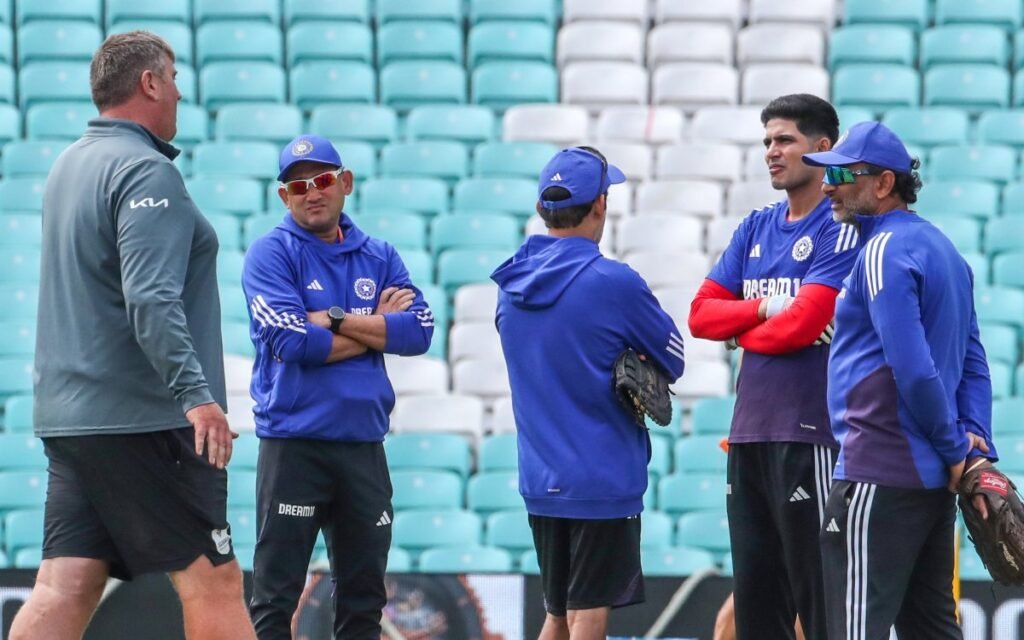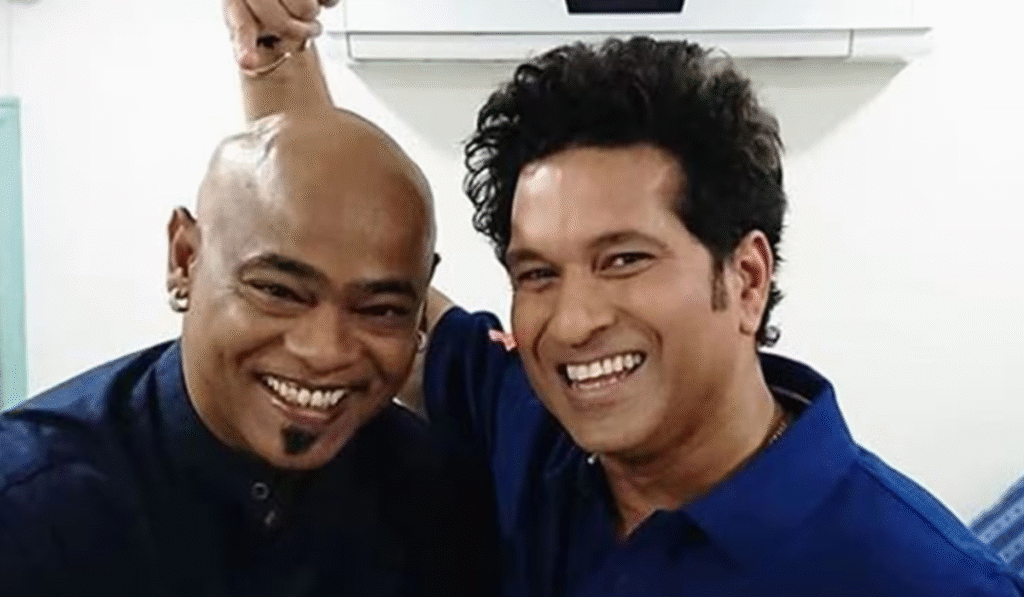Rugby-centric Bronco Test for Indian cricketers

The BCCI has reportedly introduced a rugby-centric Bronco fitness test for Indian players in an effort to ensure consistently high fitness standards. It will now be used alongside the established Yo-Yo test and 2-kilometer time trial to assess players’ readiness for international competition. To ensure top Indian cricketers maintain a high level of fitness and improve their aerobic capacity, the rugby-centric Bronco Test — involving multiple shuttle runs of 20 metres, 40 metres and 60 metres — has been introduced. the Indian team’s strength and conditioning coach Adrian le Roux who also wants the fast bowlers to clock more running miles instead of being gym-focused. Head coach Gautam Gambhir is also on the same page. For starters, the Bronco test does not replace the existing Yo-Yo test and the 2-kilometre time trial. India head coach Gautam Gambhir and strength and conditioning coach Adrian le Roux have instead introduced the Bronco test, originally developed for rugby which measures aerobic endurance and pushes cardiovascular limits. What is the Bronco test? The Bronco test is a high-intensity aerobic running drill which involves shuttle runs of 20, 40 and 60 metres respectively. So an athlete must run 20 metres and cover as much distance on the way back, totaling 40 metres. Going by this rule, the player effectively covers 80m and 120m respectively for the other two shuttle runs. The three distances form a set, and in the Bronco test, a player must complete five sets, effectively covering 1,200 metres, without taking rest. The time taken to complete the five sets is then noted as a measure of a player’s fitness, with the team currently setting six minutes as the benchmark. Why the Bronco Test? “The Bronco Test has been introduced at the Centre of Excellence. Some of India’s contracted players have travelled to Bengaluru and have taken the test. The Bronco Test is being used to ensure there are clear fitness standards. Also, it was noticed that Indian cricketers, more so the fast bowlers, were not running enough and spending too much time in the gym. Players have been told that they will have to do more running,” a source said. In the 2-km time trial, the benchmark for fast bowlers was 8 minutes and 15 seconds. For batsmen, wicket-keepers and spinners, it was 8 minutes and 30 seconds. The Yo-Yo-Test involves running between markers placed 20 meters apart, at increasing speeds, with a 10-second break between each 40-metre run. The minimum Yo-Yo level for the Indian team was set at 17.1. According to The Indian Express, several players have already undergone the Bronco test at the BCCI’s Centre of Excellence in Bengaluru. Additionally, le Roux had recommended the test in response to concerns over players, especially fast bowlers, spending too much time in gyms instead of endurance training. Le Roux had rejoined the Indian team as their s&c coach in June this year, having previously worked with the Indian team from January 2002 and May 2003 under then-captain Sourav Ganguly and head coach John Wright. He has also worked with Cricket South Africa as well as Indian Premier League franchises Kolkata Knight Riders and Punjab Kings.
Virendra Kambli clarifies his brother Vinod never claimed to be better than Sachin Tendulkar

Vinod Kambli, who rose to prominence in the late 1980s and early 1990s, was widely seen as a naturally gifted batter. Around the same time, Sachin Tendulkar also came into the spotlight, sparking endless debates about who was the more talented of the two. While many believed Kambli had greater flair, others backed Tendulkar. In the end, however, it was Tendulkar who turned his potential into record-breaking performances, while Kambli struggled to live up to the promise of his early years. Virendra, the brother of former India cricketer Vinod Kambli, has revealed what kind of relationship the latter shared with Sachin Tendulkar. Kambli’s brother, Virendra, speaking in an interview about the talent and the relationship between Kambli and Tendulkar. “Both had the same talent. You can’t say my brother was greater than Sachin or vice versa. They were both the same. I never heard my brother say he was better than Sachin,” Virendra said in an interview with Vickey Lalwani. “Both had the same talent,” Virendra declared to Vickey Lalwani in an interview. “You can’t say my brother was greater than Sachin or vice versa. They were both the same. I never heard my brother say he was better than Sachin.” Virendra was also asked about reported rifts between the two cricketers, and about statements from Kambli (which he later took back) that Tendulkar let him down when he needed support. “No, that’s not true,” Virendra said. “Sachin dada has always supported Vinod. Their friendship is still very strong. Sachin calls and checks on him with Andrea (Kambli’s wife).” Later, pushed about players that Kambli respected the most, Virendra again named Tendulkar. “Sachin Dada. He was closest to him,” he said. “I don’t know about others, but I saw them together when I would go to watch Ranji Trophy matches. I would go to the dressing room to eat, and Sachin Dada, Vinod, and I would sit together and have fun. We would joke around and have a good time.” Virendra tip-towed around the subject of indiscipline about Kambli, but did mention that he got too carried away in the glamour of the sport. Virendra added that he still advises his students not to ‘go overboard’. “I will give this message: If you play cricket and get glamour, learn to be grounded. Be down-to-earth. I have also been playing cricket for many years. I have learned by watching Sachin Dada and Vinod Dada. I have learned by watching their batting on TV. I have seen their hard work since childhood. I tell the kids to work hard. If you get success after working hard, then hold on to that success. Don’t go overboard, as we say. Don’t get carried away,” he said in the interview. Virendera, too, played some cricket growing up and now runs an academy. Nasa Hussain, now in his 50s, works as the head groundsman at the Park Avenue ground in Bradford, England — a locality with a strong South Asian community, particularly people with roots in Pakistan and India. Back in the early 1990s, much like Vinod Kambli, he too was a young cricketer chasing big dreams. Kambli was 19 but he had the swagger of a Test veteran. “As a South Asian, Sachin joining Yorkshire was big news. I’ll tell you what was better, he brought along with him his friend Vinod Kambli, who played in our league. I’ve never-ever met a person who hits the ball as hard as he used to,” he said. Nasa still remembers the first ball he bowled to him. “He just runs down the track and hits the first ball for six, and you think, ‘well okay’. Young man from India, never seen before, never heard of before, and he just comes and smashes it. Subsequently, he went on to score two double-hundreds against England. That was some talent,” he says before seamlessly switching to a rueful tone. “In today’s day and age, that guy would have been a multi-millionaire.”





